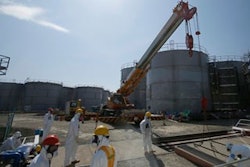Explore the most common areas of increased profitability and safety when implementing a vacuum conveying system for the transport of bulk dry materials.
Workplace injuries in any organization take a bite out of profits. There is a wealth of data, statistics, and surveys from scores of organizations regarding occupational illness and injuries. The statistics regarding the number of injuries and illnesses that occur on the job and purported annual costs of $250 billion is astronomical and difficult to digest at an organizational level and can therefore dilute the significance of injury costs to a single organization.
To bring these costs closer to an organizational level, it is necessary to first identify the most common injuries and illnesses in the manufacturing arena. In the goods producing industry, which accounts for account for 35 percent of all occupational illness and injury cases, “manual materials handling is the principal source of compensable injuries,” according to OSHA.
When practical, designing the hazard out of the process through engineering is the best practice for reducing them. While four out of five manual materials handling injuries affect the back (lifting, repetitive motion, slips, and falls), when manually transporting bulk dry materials, additional safety hazards such as poor respiratory environment and fugitive dust problems — hazards that can be effectively eliminated with pneumatic conveying systems — are present.
Pneumatic conveyors use vacuum to gently and quickly move materials from point to point with nothing in the way to impede the efficiency of its movement. Used to convey, batch, and weigh dry materials from fine powders to plastic pellets and caps, pneumatic conveyors consist of five basic pieces of equipment that come together to work as one – a pick up point, convey tubing, a vacuum receiver, a vacuum producer, and a control module.
[Continue Reading...]























